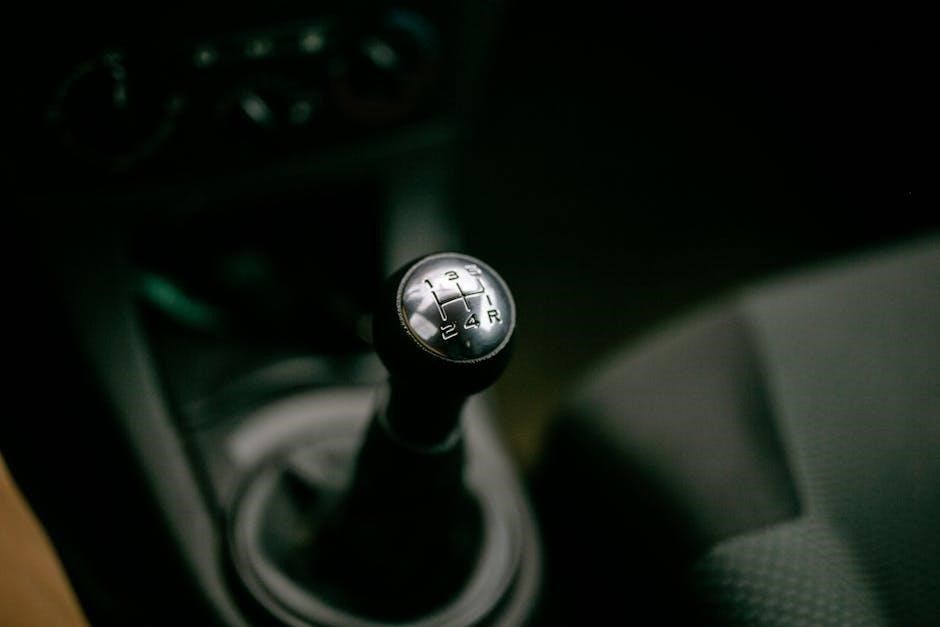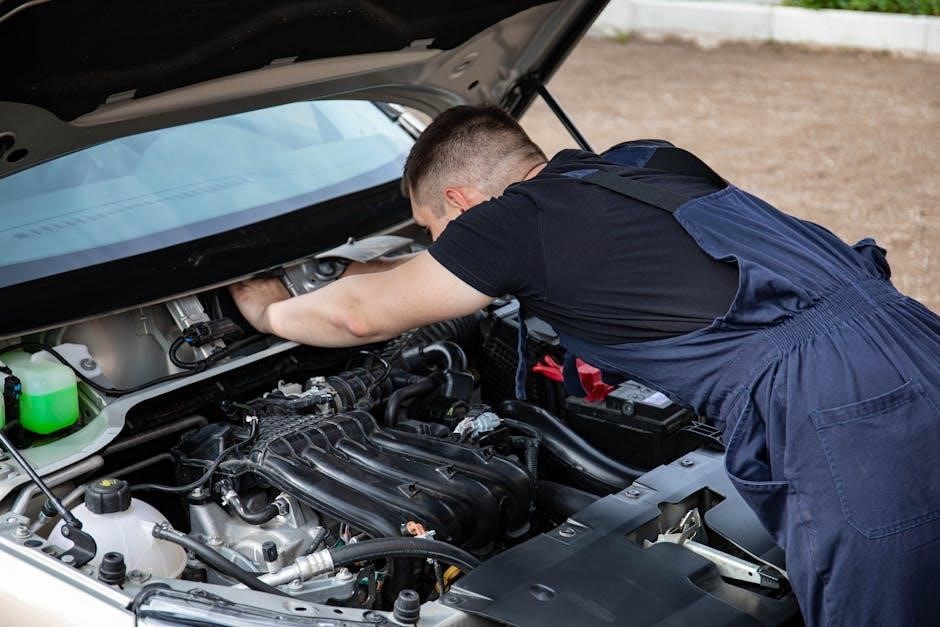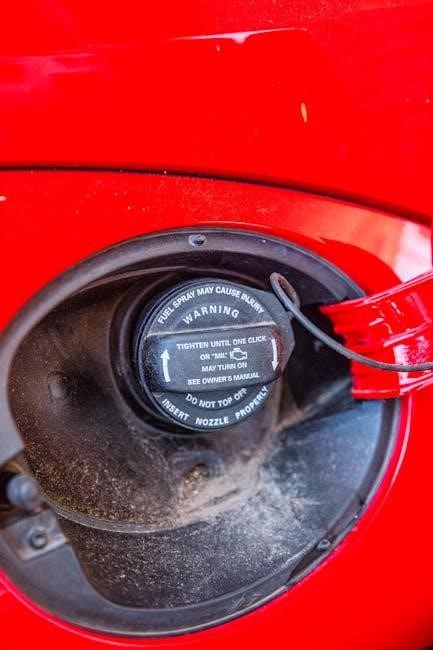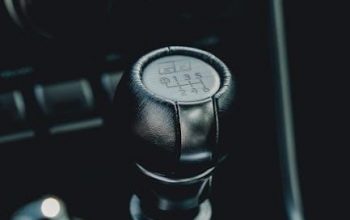A multimeter is an essential tool for measuring electrical parameters like voltage, current, resistance, and continuity. It offers auto-ranging and manual-ranging options, ensuring precise and efficient measurements.
What is a Multimeter?
A multimeter is an electronic device designed to measure various electrical properties, including voltage, current, resistance, and continuity. It combines multiple measurement functions into one tool, making it versatile for diagnosing and repairing electrical circuits. Modern multimeters often feature auto-ranging, which automatically selects the appropriate measurement range, while manual-ranging models require the user to set the range manually. Both types provide accurate readings, but auto-ranging offers convenience, while manual-ranging gives more control. Multimeters are essential for professionals and hobbyists alike, ensuring precise measurements in a wide range of applications. Their portability and functionality make them indispensable in electrical work.

Importance of Ranging in Multimeters
Importance of Ranging in Multimeters
Ranging in multimeters ensures accurate measurements by selecting the appropriate scale for the parameter being measured. Proper ranging prevents damage to the device and avoids misleading results. Auto-ranging automatically adjusts the scale, offering convenience and reducing errors, especially for users unfamiliar with expected values. Manual ranging allows experienced users to set specific scales, optimizing precision for known measurements. Both methods are crucial for reliable diagnostics and repairs in electrical systems. Accurate ranging enhances safety, protects the device, and ensures reliable data, making it a fundamental aspect of multimeter usage. It is essential for achieving precise and trustworthy measurements in various applications, from basic repairs to complex engineering tasks.

Understanding Auto Ranging
Auto ranging in multimeters automatically selects the optimal measurement range, ensuring accuracy and ease of use without manual adjustments, ideal for quick and precise electrical diagnostics.
What is Auto Ranging?
Auto ranging is a feature in digital multimeters that automatically selects the appropriate measurement range for the input signal. This eliminates the need for manual range selection, simplifying the measurement process. The device analyzes the input and adjusts its range to ensure accurate readings, reducing errors caused by incorrect range settings. Auto ranging is particularly useful in situations where the input value is unknown or varies widely, as it adapts dynamically to provide the best resolution and accuracy. This feature enhances efficiency and convenience, making it ideal for quick diagnostics and measurements in various electrical applications.

How Auto Ranging Works
Auto ranging in multimeters operates by automatically selecting the optimal measurement range based on the input signal. When a measurement is initiated, the device quickly analyzes the input to determine its magnitude. It then adjusts its internal range settings to ensure the reading is displayed with the highest possible accuracy. This process happens dynamically, often in a matter of milliseconds. The multimeter switches between predefined ranges, such as voltage or current scales, to match the input value. This eliminates the need for manual range selection, minimizing errors and saving time. The system ensures precise measurements by continuously monitoring and adjusting the range during the testing process.
Advantages of Auto Ranging
Auto ranging offers unparalleled convenience and efficiency in multimeter usage. It eliminates the need for manual range selection, reducing the risk of human error and saving valuable time. The automatic adjustment to the optimal range ensures high accuracy and precision in measurements. This feature is particularly beneficial for users who may lack experience in selecting appropriate ranges. Additionally, auto ranging enables faster measurements, making it ideal for quick diagnostics and troubleshooting. It also reduces wear and tear on the device by minimizing the need for frequent manual adjustments. Overall, auto ranging enhances user experience by simplifying the measurement process and delivering reliable results efficiently.
Disadvantages of Auto Ranging
Despite its convenience, auto ranging has some drawbacks. It can sometimes lead to less precise measurements for specific applications, as the meter may not always select the optimal range. Additionally, auto ranging can be slower in certain scenarios, particularly when measuring fluctuating values. The lack of manual control may also be a disadvantage for experienced users who prefer more control over their measurements. Furthermore, auto-ranging multimeters are generally more expensive than manual models. In some cases, auto-ranging meters may struggle with complex circuits or non-standard signals, potentially leading to inaccurate readings. This makes manual adjustment necessary in such situations, limiting the feature’s reliability. Over time, this can increase the overall cost of ownership.

Understanding Manual Ranging
Manual ranging requires users to set the measurement range themselves, offering greater control over precision and accuracy for specific tasks, though it demands a good understanding of the expected values.
What is Manual Ranging?
Manual ranging is a feature in multimeters where the user manually selects the measurement range for voltage, current, or resistance. This method requires the operator to have prior knowledge of the expected value range to choose the appropriate scale. Unlike auto-ranging, which automatically adjusts the range, manual ranging gives the user full control over the measurement setup. It is particularly useful in situations where precise measurements are critical, and the operator wants to avoid potential errors caused by automatic range selection. However, it demands a good understanding of electrical measurements and the device under test to ensure accuracy and reliability.
How Manual Ranging Works
Manual ranging requires the user to select the appropriate measurement range using a dial or button on the multimeter. The process involves estimating the expected value of the parameter being measured (e.g., voltage, current, or resistance) and choosing the closest range from the available options. For example, if measuring voltage, the user might select the 0-10V range if they expect a reading within that span. This method avoids automatic range selection, giving the operator full control. However, it demands skill and prior knowledge of the expected measurement range to ensure accuracy and prevent overflow or imprecise readings. Proper manual ranging ensures reliable and precise measurements.
Advantages of Manual Ranging
Manual ranging offers precise control over measurements, allowing users to select the exact range for their needs. This reduces the risk of measurement errors caused by auto-ranging misjudging the scale. It also enables faster measurements once the range is set, as there’s no delay in switching ranges automatically. Additionally, manual ranging is often more reliable in noisy environments where auto-ranging might malfunction. It also helps in avoiding incorrect range selections, which can damage the multimeter or provide inaccurate results. Overall, manual ranging is ideal for professionals who understand the expected measurement range and need consistent, accurate readings in controlled settings. This method ensures reliability and precision.
Disadvantages of Manual Ranging
Manual ranging requires the user to manually select the appropriate range for each measurement, which can be time-consuming and error-prone. If the wrong range is selected, it may lead to inaccurate readings or damage to the multimeter. This method demands a good understanding of the expected measurement values, as incorrect range selection can result in overload or imprecise results. Additionally, manual ranging is less convenient for quick measurements, as it involves constant adjustments. It also lacks the efficiency of auto-ranging, which automatically selects the best range for accuracy. Thus, manual ranging is less practical for users who prioritize speed and simplicity in their measurements.

Comparison of Auto Ranging and Manual Ranging
Auto ranging offers ease of use and faster measurements, while manual ranging provides precise control but requires technical expertise. Each method suits different scenarios and user preferences.
Key Differences
The primary distinction between auto-ranging and manual-ranging multimeters lies in their functionality. Auto-ranging automatically selects the appropriate measurement range, ensuring quick and user-friendly operations. In contrast, manual-ranging requires the user to physically set the range using a dial or button, offering more control but demanding technical knowledge. Auto-ranging is ideal for general-purpose tasks, while manual-ranging suits specialized applications where precise measurements are critical. Additionally, auto-ranging devices often feature advanced technology for accuracy, whereas manual models rely on the user’s skill to avoid errors; This fundamental difference impacts both ease of use and measurement precision, catering to distinct user needs.
Accuracy and Precision
Auto-ranging multimeters typically offer higher accuracy by automatically selecting the optimal measurement range, reducing human error. They adjust scales dynamically, ensuring precise readings without manual intervention. In contrast, manual-ranging devices rely on the user to set the correct range, which, while offering control, can lead to inaccuracies if misconfigured. Auto-ranging models often feature advanced circuits that enhance precision, whereas manual models depend on the user’s technical expertise. Both types can deliver accurate results, but auto-ranging tends to be more consistent for general use, while manual-ranging excels in specialized scenarios where specific adjustments are necessary. Proper usage and calibration are key to maximizing accuracy in both cases.
Ease of Use
Ease of Use
Auto-ranging multimeters are generally more user-friendly, as they eliminate the need to manually select the appropriate range for measurements. This makes them ideal for beginners or for quick, general-purpose tasks. Manual-ranging multimeters, while requiring more expertise, offer greater control for specialized measurements. Auto-ranging simplifies the process by automatically adjusting to the best scale, reducing the risk of human error. Manual-ranging, however, demands a better understanding of the expected measurement range, which can be time-consuming. For everyday use, auto-ranging multimeters are more convenient, while manual-ranging suits experienced users who need precise control. The choice depends on the user’s skill level and specific requirements.
Measurement Speed
Measurement speed varies significantly between auto-ranging and manual-ranging multimeters. Auto-ranging models automatically adjust to the optimal range, enabling faster measurements and reducing downtime. This feature is particularly advantageous in fieldwork or when troubleshooting, where quick results are essential. Manual-ranging multimeters, however, require users to set the range manually, which can delay the measurement process. Despite this, manual-ranging allows for precise control, making it suitable for applications where accuracy is critical. Auto-ranging multimeters are generally faster and more efficient for general-purpose use, while manual-ranging is better suited for specialized tasks requiring exact measurements. The choice ultimately depends on the user’s priorities for speed versus precision.
Cost Considerations
Cost is a significant factor when comparing auto-ranging and manual-ranging multimeters. Auto-ranging models are typically more expensive due to their advanced features, which include automatic range selection and faster measurements. These multimeters are ideal for professionals who require precision and efficiency, justifying the higher cost. Manual-ranging multimeters are generally more affordable, making them a budget-friendly option for hobbyists or educational purposes. However, they may lack the convenience and speed of auto-ranging models. The choice between the two often depends on the user’s budget and the level of functionality needed. Balancing cost with desired features is crucial for making an informed decision.

Choosing the Right Multimeter
Selecting a multimeter involves balancing accuracy, ease of use, and cost. Consider your workload, measurement needs, and whether auto-ranging or manual-ranging suits your tasks better for optimal efficiency.
When to Use Auto Ranging
Auto-ranging multimeters are ideal for quick, efficient measurements when the exact range is unknown. They automatically adjust to the best scale, saving time and reducing errors. Use auto-ranging for fieldwork, where speed is crucial, or when dealing with unknown values. It’s also beneficial for users who prioritize ease of use and convenience. Auto-ranging excels in everyday tasks like voltage, current, and resistance measurements, where precise range selection isn’t critical. However, for high-precision applications or when specific ranges are required, manual control may be preferable. Auto-ranging is a practical choice for general-purpose troubleshooting and diagnostics, offering versatility and simplicity.
When to Use Manual Ranging
Manual ranging is best suited for precise measurements where accuracy is critical. It allows users to select a specific range, reducing measurement errors and improving resolution. Use manual ranging in controlled environments like laboratories or when working with known values. This feature is ideal for professionals who require exact measurements, such as in high-precision electronics or industrial settings. It also helps in avoiding auto-ranging delays when the range changes frequently. Manual control ensures consistency and reliability, making it essential for advanced applications where accuracy cannot be compromised. However, it requires more user expertise and time compared to auto-ranging, which may be a drawback in fast-paced environments.

Factors Influencing the Choice
The decision between auto-ranging and manual-ranging multimeters depends on several factors. Accuracy and precision requirements are primary, as manual-ranging often provides better resolution for specific measurements. Budget plays a role, with auto-ranging models typically being more expensive. Ease of use is another consideration, as auto-ranging is more convenient for beginners or quick measurements. Measurement speed and application-specific needs, such as fieldwork vs. laboratory use, also influence the choice. Additionally, user expertise matters; manual-ranging suits experienced professionals, while auto-ranging is ideal for those seeking simplicity. Balancing these factors ensures the right tool is selected for the task at hand.

Maintenance and Care
Regular calibration and accuracy checks ensure reliable measurements. Proper storage in a dry, cool place prevents damage. Clean probes and verify battery health for optimal performance. Follow manufacturer guidelines for longevity and precision in both auto-ranging and manual multimeters.
Calibration and Accuracy Checks
Regular calibration ensures multimeters provide accurate readings. For auto-ranging models, verify the device switches ranges correctly and displays precise values. Manual-ranging multimeters require checking each scale to ensure conformity with known standards. Use calibration labs or reference signals to test accuracy. Adjustments should be made according to the manufacturer’s guidelines to maintain precision. Additionally, clean the probes and leads to avoid measurement errors. Accurate calibration is crucial for both types of multimeters to ensure reliability in various electrical measurements. Schedule periodic checks to uphold performance and trustworthiness in your results. Neglecting calibration can lead to misleading data and potential safety risks. Always follow the recommended maintenance routines to preserve your multimeter’s functionality and accuracy.
Proper Storage and Handling

Proper storage and handling are crucial to maintain the functionality of your multimeter. Store it in a cool, dry place, away from direct sunlight and moisture. Avoid exposing the device to extreme temperatures or physical stress, as this can damage internal components. Clean the multimeter and its probes regularly with a soft cloth and mild detergent to prevent dirt buildup. When not in use, store the probes in a protective case to avoid damage. Never leave the probes connected to a circuit after use, as this can cause wear or electrical damage. Proper organization and storage ensure your multimeter remains accurate and reliable for future measurements.
Regular Maintenance Tips
Regular maintenance ensures your multimeter performs accurately and lasts longer. Check and replace worn-out probes and leads, as they can compromise measurement precision. Verify battery levels and replace them when necessary to avoid sudden power loss during use. Calibrate the multimeter periodically according to the manufacturer’s instructions to maintain accuracy. Use a soft cloth to clean the display and internal components, preventing dust buildup. Regularly inspect the fuse and replace it if blown. Store the multimeter properly and avoid exposing it to harsh environments. These routine checks ensure optimal performance and extend the lifespan of your device, whether using auto-ranging or manual-ranging modes.
Auto-ranging multimeters automatically select the best range for measurements, offering convenience and speed, while manual-ranging models require users to set the range, providing precision for specific tasks. Auto-ranging is ideal for quick, versatile measurements, whereas manual-ranging suits applications needing exact control. Both types have trade-offs in accuracy, ease of use, and cost. Understanding these differences helps users choose the right tool for their needs, balancing efficiency and precision. Proper maintenance and calibration ensure accuracy, while storage and handling practices prolong device longevity. Selecting between auto and manual ranging depends on the user’s expertise, task complexity, and desired outcomes.
Final Recommendations
Choosing between auto-ranging and manual-ranging multimeters depends on your specific needs. For convenience and speed, opt for an auto-ranging model, especially if you prioritize ease of use; However, if precision and control are critical, manual-ranging is the better choice. Consider your budget, as auto-ranging multimeters are often more expensive. For professionals, investing in a high-quality auto-ranging multimeter with manual override is ideal. Hobbyists or DIYers may prefer manual-ranging for better cost-effectiveness. Always ensure proper calibration and maintenance for accuracy. ultimately, select a multimeter that aligns with your expertise level, task requirements, and budget to maximize efficiency and reliability in your measurements.



